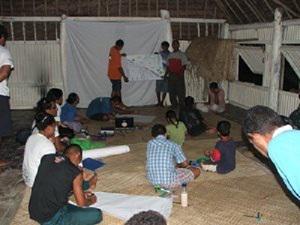Monifa Fiu
In recognition of our natural island environment as an integral part of daily life, this project aims to revive cultural and traditional links with the natural world as part of a community-based environmental awareness and development program. This project envisions to strengthen the capacity of the Rotuma Island community in the long-term, to make informed decisions on sustainable management of its fragile and very limited natural resources.

LäjeRotuma is a voluntary, community-based environmental awareness and development program initiated in February 2002 by a group of young Rotuman professionals who share a common heritage and commitment to mobilize their own island community to manage well their very limited natural resources and fragile island ecosystem. Rotuma is a 43 square kilometre island located 300 miles Northwest of the main Fiji Group. Shift in value and use of natural resources accelerates loss of Rotuman traditional knowledge and practices important to biodiversity conservation. The LäjeRotuma project recognize the use and conservation of biodiversity as an integral part of Rotuman culture- traditional practices that cannot be separated from its ethical, aesthetic values, or from its socio economic reality. LäjeRotuma has focused its activities under four interlinked themes encapsulated in community empowerment, education, awareness and active people participation in building community resilience, quantifying uniqueness and biodiversity status of Rotuma, and ethnobotany, conservation, protection and nurturing principles.

LäjeRotuma is locally governed by the island and promotes community ownership of sustainable resource management actions, research initiatives derived from five years of consultation for which community environmental priorities match some conservation measure. Inter-island community partnerships as well as with other indigenous communities (through cultural exchanges), government and research institutions will foster community participation and commitment to protect their own natural heritage.